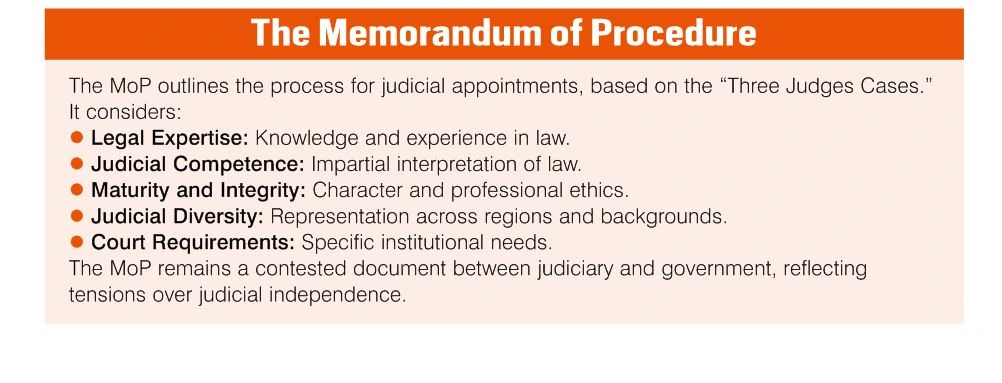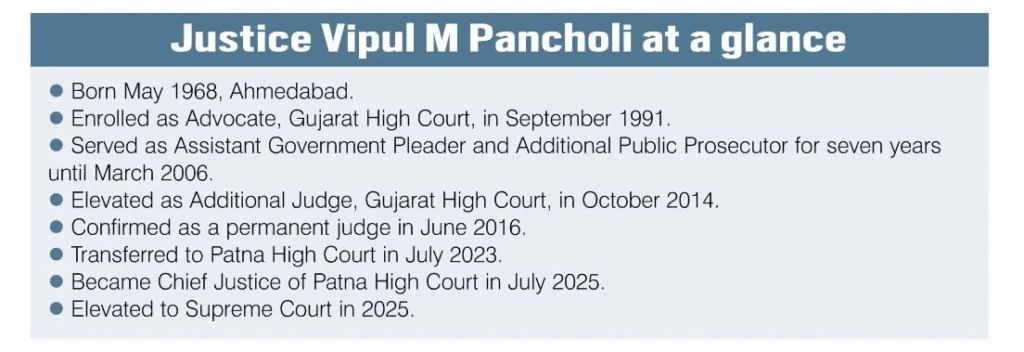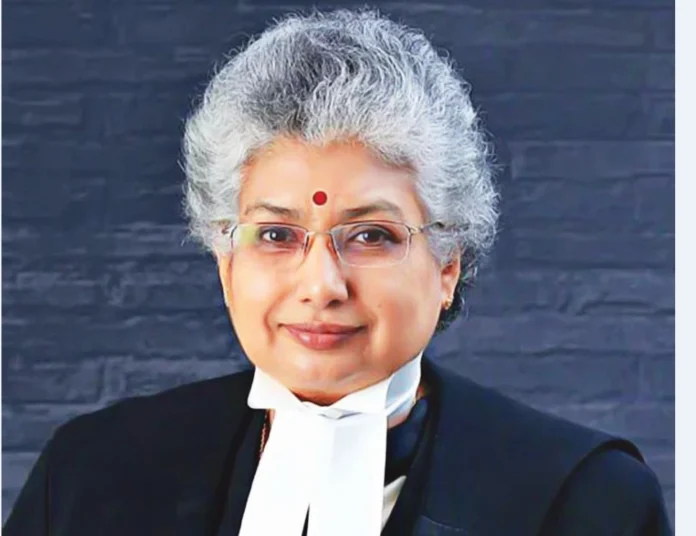By Sanjay Raman Sinha
As Chief Justice of India BR Gavai administered the oath of office to two new judges of the Supreme Court, Justice Alok Aradhe and Justice Vipul M Pancholi, what should have been a routine ceremony instead drew media attention. The reason: acrimony over Justice Pancholi’s appointment, and the lone, but forceful dissent of Justice BV Nagarathna.
Justice Nagarathna reportedly objected strongly to Justice Pancholi’s elevation, cautioning that it ran contrary to established norms of judicial administration and would undermine the credibility of the Collegium system itself. Her dissent, though outvoted 4-1 in the Collegium, was never officially recorded on the Supreme Court’s website. Yet, it surfaced widely in the media through reliable sources—and tellingly was never denied by the higher judiciary.
The five-member Collegium that approved Justice Pancholi comprised Chief Justice BR Gavai and Justices Surya Kant, Vikram Nath, JK Maheshwari, and BV Nagarathna.

SENIORITY CONTROVERSY
Before his elevation, Justice Pancholi stood 57th in all-India seniority among High Court judges. His appointment superseded three senior women judges as well as 21 High Court chief justices. This leapfrogging revived debate about supersession in judicial appointments.
There have been precedents. Justice Sanjiv Khanna was elevated when he was 33rd in seniority; Justice Ruma Pal was chosen at 58th rank. History records even more controversial cases: during Indira Gandhi’s regime, Justice AN Ray was appointed chief justice in 1973 over three seniors after the Kesavananda Bharati verdict, and later Justice MH Beg was preferred over Justice HR Khanna—whose celebrated dissent in the ADM Jabalpur case made him inconvenient to the government of the day.
The principle of seniority was intended to shield appointments from political manipulation, though it has never been foolproof. The Executive still plays a subtle hand by influencing seniority and succession, thereby shaping who becomes the next chief justice of India. Justice Pancholi himself is positioned to become the country’s 60th CJI in 2031, with a tenure of 18 months.

REGIONAL IMBALANCE
Justice Nagarathna also reportedly raised the issue of regional imbalance. While the Memorandum of Procedure (MoP) does not explicitly codify regional representation, it has long been a convention that the Supreme Court reflects the diversity of India’s High Courts. Justice Pancholi hails from the Gujarat High Court, which already has two sitting judges—Justices JB Pardiwala and NV Anjaria—in the Supreme Court. His addition would skew representation further, while several High Courts remain underrepresented.
The MoP emphasises not only legal competence, maturity, fairness, and integrity, but also diversity. Ignoring regional balance, Justice Nagarathna warned, risked undermining the Collegium’s credibility.

THE GENDER QUESTION
Perhaps the most stinging criticism concerns Justice Pancholi’s supersession of three women judges: Justices Sunita Agarwal, Revati Mohite Dere, and Lisa Gill. The Collegium’s decision to sideline senior women has invited sharp disapproval, particularly from the legal fraternity.
Notably, the last time women were elevated to the apex court was in 2021, during Justice NV Ramana’s tenure, when Justices Hima Kohli, Bela Trivedi, and Nagarathna herself joined the bench. Since then, the Court has seen no new women appointees. This dry spell sits uneasily with the Collegium’s oft-professed commitment to diversity and inclusivity.
COLLEGIUM TRANSPARENCY
Dissent within Collegium deliberations is not unprecedented. But the selective leaking of Justice Nagarathna’s reported objections has raised eyebrows. While it may not be prudent to publish every deliberation, the opaque nature of appointments fuels public speculation.
The judiciary often invokes the principles of natural justice; many argue that these same principles demand an objective, transparent framework for appointments.
At stake is not only one appointment, but the credibility of the Collegium system itself—a system already under scrutiny for its opacity, and one that Justice Nagarathna has now placed squarely under the public gaze.


